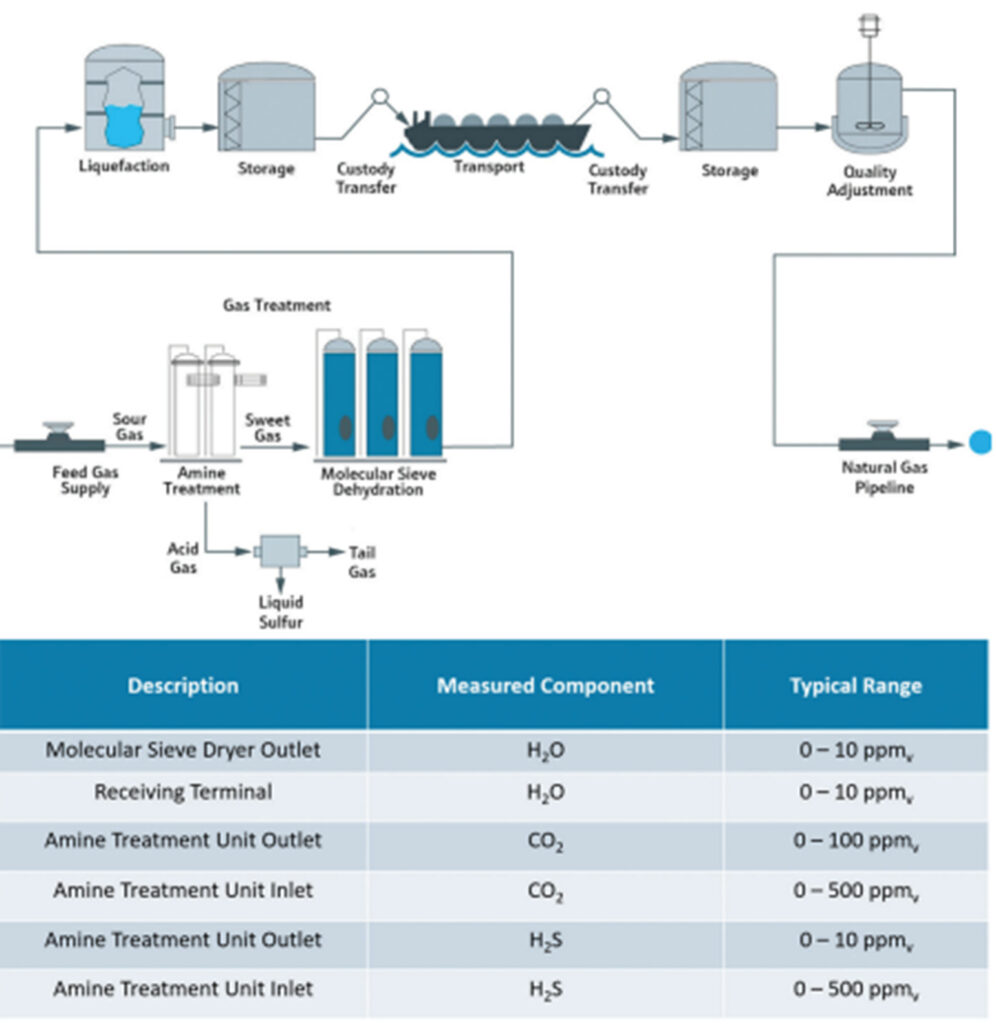Increased efficiency and sustainability with geothermal pond system
Sustainability is one of Endress+Hauser’s core brand values and it is built into the company strategy and culture. With sustainability […]
Based on the recently published article coauthored by Alan Garza, Sam Miller, and Scott Sutherland, Discussing LNG: Adapting to a more strategic role calls for effective quality analysis, this blog references the main points of discussion relating to Hydrocarbon Processing and the use of analyzer technology for LNG transport.

As the disruption of the global hydrocarbon supply chain increases, liquefied natural gas (LNG) has become an important topic for buyers and sellers looking to satisfy energy needs. LNG is moved around the world every day, comes from a variety of sources, each with unique characteristics, and is worth billions of dollars.
Analyzer technologies ensure natural gas is fully processed before liquefaction and can identify when it suffers value loss during an extended transit period. New techniques provide greater measurement accuracy and reliability combined with lower lifetime costs and maintenance. This blog will compare how traditional Gas Chromatography and Raman Spectroscopy differ in evaluating LNG through its production chain and verifying its suitability for pipeline use after pretreatment.

Compared to locally produced gas, LNG has fewer contaminants due to them being removed during the extensive pretreatment process.
The contaminant levels involved in this pretreatment stage call for tunable diode laser absorption spectroscopy (TDLAS) analyzers to be implemented at transfer points in each stage. These TDLAS analyzers will then verify the quality of the catalyst and the overall pretreatment process by the level of contaminants in the gas before reaching further into the liquification process.
Once pretreatment is complete, the gas moves to liquefaction and onto the transport mechanism.
Next, the natural gas is liquefied and transferred onto a ship. Arriving shoreside, the LNG is then transferred to a storage tank for regasification before entering the pipelines.
LNG changes while in transport, it boils off its light components, causing them to escape into the tank. The typical LNG tank load can have a value of up to $50 MM or more, a change of even 1% is worth $500,000. Basic contaminant levels and calorific values must be verified. The challenge at hand is finding an analyzer technology suited to the application.
The most traditional method when it comes to analyzing natural gas after the pretreatment stage is Gas Chromatography (GC). A typical GC analysis takes a sample of the natural gas, mixes it with an inert carrier gas, and pushes it through a packed column enclosed in an oven.
Gas Chromatography tends to be more on the complex side. The analyzer is often near the source because it depends on a sampling system to deliver gas to the analyzer. Due to the need for an ongoing supply of carrier gases and test gases for calibration, this can also start to become costly.
An LNG sample must pass through a vaporizer to phase change the sample into a gaseous form suitable for GC analysis. The vaporizer stage is usually more problematic than the analyzer itself and must ensure that it does not lose the lighter fractions or stop the process while some of the heavier fractions remain partially liquefied.
The basic challenges while using GC analyzers are:
Various gas and liquid analysis technologies have been developed around the ability of lasers to produce highly specific wavelengths of light. Raman Spectroscopy uses a laser to produce light of visible or near-infrared wavelengths. When various molecules pass through this light, the light’s energy excites the vibrations of molecular bonds. This vibration creates a scattering effect, casting the laser light into different wavelengths.

A Raman analyzer looks for these specific wavelengths and intensities to create a chemical profile of the sample. When this concept is applied to LNG analysis, a probe is inserted into the pipe to analyze the flowing liquid or gas. Laser light is emitted from the end of the probe into the LNG sample, and the Raman light is collected back through the same probe tip. The collected Raman light travels through a second fiber-optic cable and then enters a detector in the analyzer, where the resulting individual wavelengths are identified and quantified.
Using this approach results in several critical advantages when compared to GC analysis, including:
Click Here to read the full article, Discussing LNG: Adapting to a more strategic role calls for effective quality analysis, in the August 2022 edition of Hydrocarbon Processing magazine
Sustainability is one of Endress+Hauser’s core brand values and it is built into the company strategy and culture. With sustainability […]
Greg Pryor is the Temperature Product Marketing Manager at Endress+Hauser USA. To help answer some questions surrounding temperature transmitters, we […]
Instruments are vital in process environments because their measurements directly impact product quality and operational safety. However, even the most […]